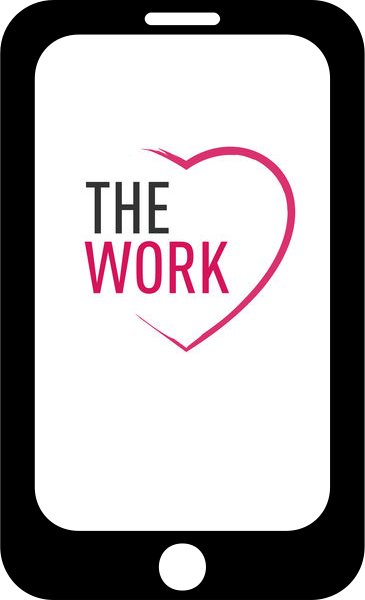- AFRIKAANS | Afrikaans
- العربية | Arabic
- CHICHEWA | Chichewa
- 简体中文 | Chinese, Simplified
- 繁體中文 | Chinese, Traditional
- ČEŠTINA | Czech
- DANSK | Danish
- DEUTSCH | German
- EESTI | Estonian
- ΕΛΛΗΝΙΚΑ | Greek
- ENGLISH | English
- ESPAÑOL | Spanish
- فارسی | Farsi
- FRANÇAIS | French
- 한국어 | Korean
- עברית | Hebrew
- HRVATSKI | Croatian
- ITALIANO | Italian
- LATVIESU | Latvian
- LIETUVIU | Lithuanian
- MAGYAR | Hungarian
- македонски | Macedonian
- NEDERLANDS | Dutch
- 日本語 | Japanese
- NORSK | Norwegian
- PAPIAMENTU | Papiamentu
- POLSKI | Polish
- PORTUGUÊS | Portuguese
- ROMÂNĂ | Romanian
- РОССИЯ | Russian
- SHQIP | Albanian
- SLOVENČINA | Slovak
- SLOVENŠČINA | Slovenian
- SRPSKI | Serbian
- SUOMI | Finnish
- SVENSKA | Swedish
- TÜRKÇE | Turkish
- ייִדיש | Yiddish
The Work is a Practice
Every time you do The Work you are becoming enlightened to who and what you are, the true nature of being. To question what you believe is an amazing gift to give yourself, and you can have it all the days of your life. The answers are always inside you, just waiting to be heard.
To begin, download a Worksheet or have a blank sheet of paper in front of you.
Notice
Who or what upsets you? Why? Recall a specific situation.
To begin, relax and be still. Travel in your mind to a specific situation where you were angry, hurt, sad, or disappointed with someone. Witness the situation. Be there now. Notice, name, and feel the emotion you were experiencing at the time. Find the reason you were upset.
Write
Capture your stressful thoughts on a Judge-Your-Neighbor Worksheet using short, simple sentences.
Staying anchored in the situation, at a specific moment in time, write down your responses to the questions on the Worksheet, using short, simple sentences. Write without censoring yourself. Allow yourself to be as judgmental, childish, and petty as you were in that moment. This is an opportunity to discover the cause of your stress and emotions in that moment.
Question
Isolate one thought. Ask the four questions. Allow the genuine answers to arise.
To begin, isolate a statement for inquiry. Now apply the four questions. Begin by repeating the original statement, then ask yourself each question. This Work is a meditation practice. It’s like diving into yourself. Contemplate the questions, one at a time. Drop into the depths of yourself, listen, and wait. The answer will meet your question.
The Four Questions
The answer to the first two questions is just one syllable: either yes or no. Be still and find your honest yes or no as it arises to meet the question. If your answer shows up as a yes, move to question two. If it’s no, then experience that no for a moment and then move to question three.
If your answer to question one is yes, ask yourself: “Can I absolutely know that it’s true?” Take this opportunity to look again. Shine the flashlight on that moment in time again, and see what reveals itself to you.
Close your eyes and witness the feelings, body sensations, and behaviors that arise when you believe that thought. Notice and report the answers to any of the following:
- What images do you see, past or future, and what emotions or physical sensations arise as you witness those images?
- How did you treat the other person?
- How did you treat yourself?
- Do any obsessions or addictions begin to appear when you believe that thought?
Closing your eyes, return to the situation. Take a moment to reflect, observe, and experience the situation again, this time without the thought. Who or what you would be without the thought? How would you see or feel about the other person? Drop all of your judgments. Notice what is revealed.
Turn It Around
Turn the thought around. Is the opposite as true as or truer than the original thought?
To do the turnarounds, find opposites of the original statement on your Worksheet. Often a statement can be turned around to the self, to the other, and to the opposite. Not every statement has as many as three turnarounds. Some may have just one or two, and others may have more than three. Some turnarounds may not make any sense to you. Don’t force these.
The Turnarounds
The Original Thought:
Paul doesn’t listen to me.
Possible Turnarounds:
I don’t listen to myself.
I don’t listen to Paul.
Paul does listen to me.
As you do The Work on subjects such as the body, disease, career, or God, when you come to the turnarounds, substitute the words “my thinking” for the subject. Example:
“My body should be strong, flexible, and healthy”
turns around to
“My thinking should be strong, flexible, and healthy.”
Isn’t that what you really want—a balanced, healthy mind? Has a sick body ever been a problem, or is it your thinking about the body that causes the problem?
The Original Thought:
I don’t ever want Paul to lie to me again.
I don’t ever want to see him ruining his health again.
I am willing to…
I am willing for Paul to lie to me again.
I am willing to see him ruining his health again.
I look forward to…
I look forward to Paul lying to me again.
I look forward to seeing him ruining his health again.
Consider how each turnaround you find is as true as or truer than the original judgment. Find at least three specific, genuine examples of how each turnaround is true for you in that situation. This is not about blaming yourself or feeling guilty. It’s about discovering alternatives that can bring you peace.
Everything you need to do The Work is available to you free on this website.
The Judge-Your-Neighbor Worksheet and other downloadables are available by clicking the DOWNLOADS button in the top right corner of every page of this website, or from the resources below.The Little Book
This excerpt from Loving What Is provides the essence of The Work of Byron Katie in an easy read.
Worksheet Packet (a.k.a. One-Two-Three)
This packet includes the "I Complain About..." Worksheet, One-Belief-At-A-Time Worksheet, and Judge-Your-Neighbor Worksheet.
Additional Support for Doing The Work
The Work of Byron Katie Helpline
The Work Helpline is volunteer-based, serving callers from around the world.
helpline.thework.comAt Home with Byron Katie
Join Byron Katie live every Monday, Tuesday, and Wednesday, starting at 9:00 a.m. Pacific Time.



